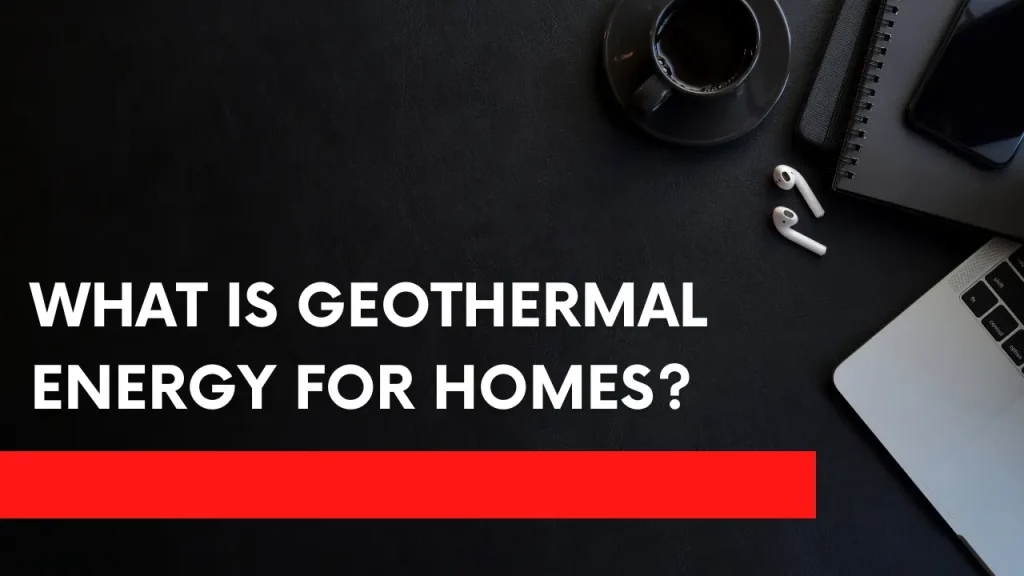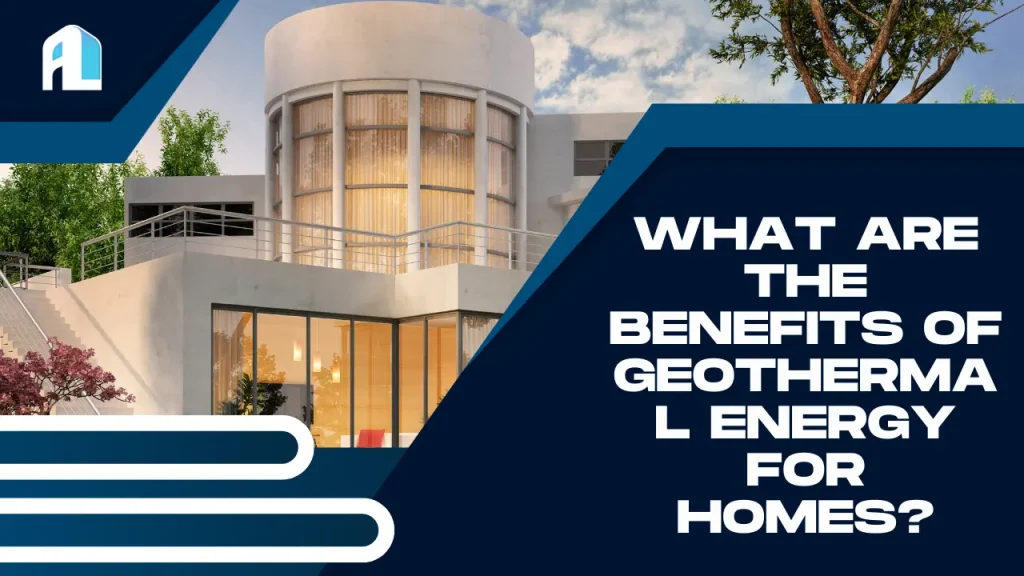Imagine walking into your home on a sweltering summer day and feeling that perfect cool breeze—or stepping inside during a freezing winter night to find your house warm and cozy—all without worrying about skyrocketing utility bills or harming the planet. Sounds like a dream? Well, it’s not. It’s called geothermal energy, and it’s quietly revolutionizing the way homeowners think about heating and cooling.
As someone who has explored countless green technologies over the years, I can confidently say that geothermal energy is one of the most underrated yet powerful solutions out there. In this article, we’ll dive into everything you need to know about geothermal energy for homes, including its benefits, costs, and why it might just be the best decision you ever make for your house—and the planet.

What Is Geothermal Energy for Homes?
Let’s start with the basics. Geothermal energy for homes is a renewable energy source that taps into the Earth’s natural heat to provide heating, cooling, and even hot water through a system called a geothermal heat pump. Unlike traditional HVAC systems that rely on fossil fuels or electricity, geothermal systems use the consistent temperature of the ground—about 55°F (13°C) just 10 feet below the surface—to regulate your home’s climate.
Think of it as borrowing warmth from the Earth in the winter and returning excess heat back to it in the summer. It’s like having a personal underground thermostat that works year-round.
How Does Geothermal Energy Work in a Home?
Here’s where things get interesting. A geothermal heat pump works by circulating a water-based solution through a series of underground pipes, known as ground loops. These loops absorb heat from the ground in the winter and transfer it indoors to warm your home. In the summer, the process reverses: the system pulls heat from your home and deposits it back into the ground.
To break it down further:
- Winter Mode: The ground loop absorbs heat from the Earth and transfers it to your home via the heat pump.
- Summer Mode: The heat pump extracts heat from your home and sends it back into the ground.
This process is incredibly efficient because the Earth’s temperature remains relatively constant year-round, regardless of whether it’s snowing outside or blazing hot.
Why Is Geothermal Energy Cost-Effective for Homes?
Yes, I know what you’re thinking: “If it’s so great, why isn’t everyone using it?” The truth is, while the upfront installation cost can be high (typically ranging from $10,000 to $30,000), the long-term savings are well worth it. Here’s why:
Energy Savings Over Time
Geothermal systems can reduce your energy bills by 30% to 70% compared to traditional HVAC systems. That means if you’re currently spending $200 a month on heating and cooling, you could save up to $140 every single month. Over a year, those savings add up fast.
Government Incentives
Many governments offer tax credits, rebates, and grants to offset the initial installation costs. For example, under the Inflation Reduction Act, homeowners can claim a federal tax credit of 30% of the total installation cost. Some states even offer additional incentives, making geothermal systems more affordable than ever.
Low Maintenance Costs
Once installed, geothermal systems require minimal maintenance. The underground loops can last 50+ years, and the heat pump itself typically lasts around 25 years. Compare that to traditional HVAC systems, which often need replacement after 10-15 years.
Geothermal vs. Traditional HVAC Systems
Still unsure if geothermal is right for you? Let’s compare it to traditional HVAC systems:
| Feature | Geothermal System | Traditional HVAC System |
|---|---|---|
| Efficiency | Up to 400% efficient | 75-98% efficient |
| Upfront Cost | Higher ($10,000-$30,000) | Lower ($3,000-$7,000) |
| Energy Savings | 30%-70% reduction in bills | Minimal savings |
| Lifespan | 25+ years (heat pump), 50+ years (loops) | 10-15 years |
| Environmental Impact | Zero carbon emissions | High carbon emissions |
While the initial investment is higher, geothermal systems pay for themselves over time through energy savings and reduced maintenance costs.

Can Geothermal Energy Work in All Climates?
Absolutely! One of the biggest misconceptions about geothermal energy is that it only works in certain climates. The reality is, geothermal systems are effective everywhere because the ground temperature remains stable year-round, regardless of whether you live in Alaska or Florida.
For example, even when it’s -20°F outside, the ground 10 feet below the surface stays at a cozy 55°F. This consistency makes geothermal systems reliable no matter where you live.
Are There Government Incentives for Home Geothermal Energy?
Yes, and they’re substantial. As mentioned earlier, the federal government offers a 30% tax credit for geothermal installations through the Inflation Reduction Act. Additionally, many states and local utilities provide rebates and incentives. For instance:
- New York State: Offers up to $5,000 in rebates for geothermal systems.
- California: Provides additional incentives through the Self-Generation Incentive Program (SGIP).
Check with your local utility provider or state energy office to see what incentives are available in your area.

What Are the Benefits of Geothermal Energy for Homes?
Let’s recap why geothermal energy is such a game-changer:
- Lower Energy Bills: Save up to 70% on heating and cooling costs.
- Reduced Carbon Footprint: Zero emissions mean you’re doing your part for the planet.
- Minimal Maintenance: With fewer moving parts, geothermal systems require less upkeep.
- Long Lifespan: Ground loops last 50+ years, and heat pumps last 25+ years.
- Quiet Operation: No noisy outdoor units like traditional AC systems.
Frequently Asked Questions (FAQs)
Q1: How much does it cost to install a geothermal system at home?
A: The cost varies based on location and system size but typically ranges from $10,000 to $30,000.
Q2: Can geothermal energy power an entire home?
A: Yes, a properly sized geothermal system can provide heating, cooling, and hot water for your entire home.
Q3: How long does a geothermal heat pump last?
A: A geothermal heat pump lasts around 25 years, while the underground loop system can last over 50 years with proper maintenance.
Q4: Are there government incentives for home geothermal energy?
A: Yes, many governments offer tax credits, rebates, and grants to offset installation costs.
Conclusion: Is Geothermal Energy Right for You?
If you’re looking for a way to reduce your energy bills, minimize your carbon footprint, and enjoy reliable, long-lasting performance, geothermal energy is worth considering. While the upfront cost may seem daunting, the long-term savings and environmental benefits make it a smart investment for any homeowner.
Ready to take the next step? Start by consulting with a certified geothermal installer in your area to explore your options. And don’t forget to check for local incentives—they could make your decision even easier.
Have questions or thoughts about geothermal energy? Drop them in the comments below—I’d love to hear from you!

